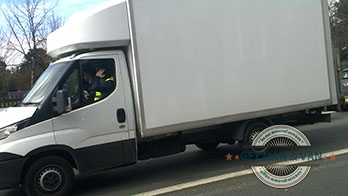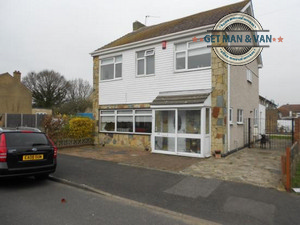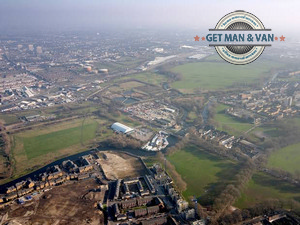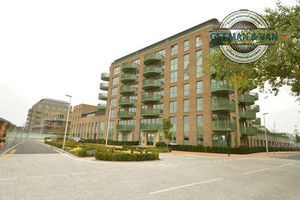The essential feature of a Luton van is its cargo box (these vehicles are also commonly known as box vans in the UK). Unlike panel vans, which have a more enclosed load space, box vans offer more flexibility for bulky loads. A Luton van without the box is basically a van chassis with a cabin. The cabin of a Luton van doesn’t really differ from the one of a standard panel van of the same make and model. The driver and passenger cab of these commercial vehicles are designed for comfort and efficiency. This however is where the similarities between the two vehicles end.
Cargo Box Material

The box of a Luton van determines its cargo capacity volume, its chassis and suspension strength determines the cargo weight. There are different types of cargo van boxes fitted on Luton vans. Their main characteristic is the material they are made of.
- Aluminium cargo box – this type of box is relatively light weight and may slightly improve the vehicle’s fuel efficiency. However, the aluminium cargo box is softer than other versions and needs to be treated carefully to avoid dents, punctures and tears during loading, transporting and unloading of heavy or sharp items.
- Fibreglass cargo box – this type of box is heavier than the option above, and may affect vehicle’s performance and fuel efficiency. Although heavier, a fibreglass enclosure is much stronger and more rigid than its aluminium counterpart. Having said this, it is not indestructible and should be treated carefully too as sharp objects and heavy items may also dent or puncture the inner or outer layer of fibreglass.
Cargo Box Size
The size of a Luton van cargo box also varies, some are larger others smaller. The cargo area of a box truck, such as a cube van or bob truck, is pivotal in determining its gross vehicle weight. A Luton van is the preferred option for man and van in London and other large cities as it gives extra cargo space without adding too much dead weight. Here is a basic comparison of cargo space in Ford Transit and Mercedes Sprinter in panel and box van versions respectively.
| Ford Transit (Panel Van) | Ford Transit (Luton Van) |
| 350 – 400 Cubic Feet | Approx. 600 Cubic Feet |
| Mercedes Sprinter (Panel Van) | Mercedes Sprinter (Luton Van) |
| 450 – 500 Cubic Feet | At least 600 Cubic Feet |
Additionally, unlike cargo vans, car derived vans often have wheel arches that intrude into the loading space, which can restrict the transport of wider items. Generally there are two sizes van box fitted on Luton vans. One is the standard size box, the other is Hi-Capacity box, also known as a Jumbo box. Both have their pros and cons, for instance – the smaller box makes the vehicle easier to navigate through tight spots, the hi-capacity one gives more cargo space.
- A standard cargo box has approximately 600 – 650 cubic feet capacity;
- A jumbo sized cargo box increases capacity to about 750 cubic feet;
The standard sized cargo box and the jumbo sized storage box vary in their payload capacity as well. The standard 3.5 ton Luton van has an operational payload between 1000 and 1200 kg. The chassis cab of a cube truck or dropside van, however, typically supports a heavier payload. The Jumbo sized box can accommodate some 1200-1300 kg, so the London man and van you hire will probably go for the jumbo box not just in cases when you need help transporting bulkier objects, but also if your possessions have a higher overall weight. It’s also important to consider van insurance for these types of commercial vehicles, as it differs from standard car insurance. Note that all dimensions and capacity estimates may vary slightly from van to van, depending on the brand and model of the vehicle employed in the particular London man and van job.
Box Vans in use for Man and Van Services
Ideally, a man and van company or a removal service provider would base their choice on the particulars of their day to day work. If a company deals solely with lighter goods, then perhaps an aluminium box is the more suitable option. Flatbed vans, for instance, are typically used for transporting goods that are too large or awkward for enclosed cargo vans. Obviously, heavier items are best transported in a fibreglass cargo space. The size of the box itself is also based on the specifics of day to day work – a larger box makes the physical size of the vehicle bigger. The rear doors of these vans are designed to facilitate easy loading and unloading, especially for bulky loads. However, fewer items can be transported efficiently in a larger box, but not the other way around.
About the Author:
Prev: « Self driving lorries are hereNext: Why you should move to Camden Town »









